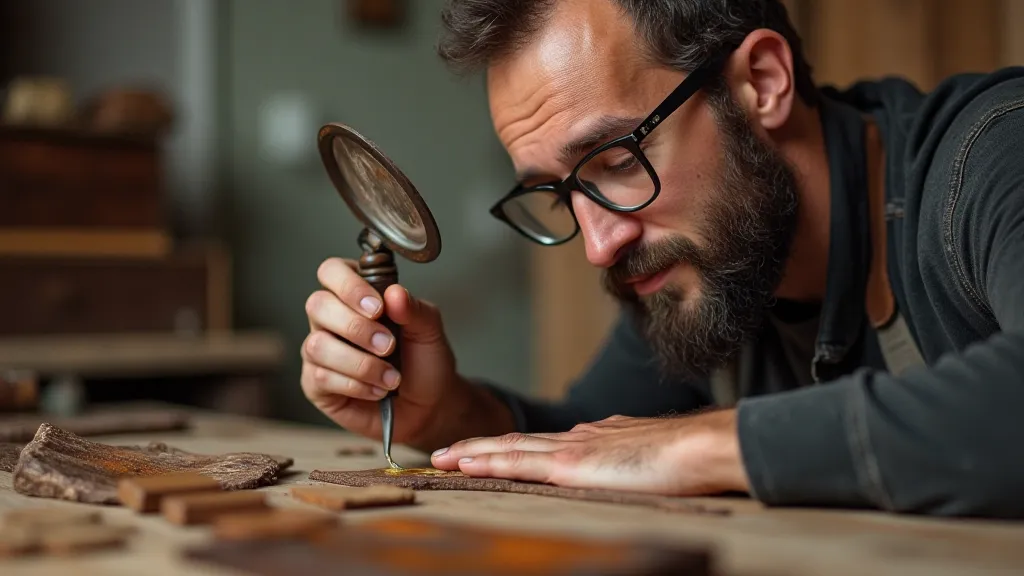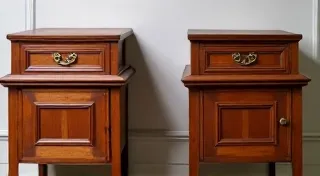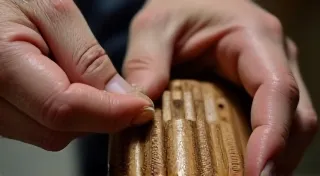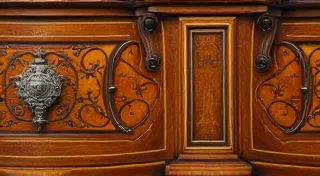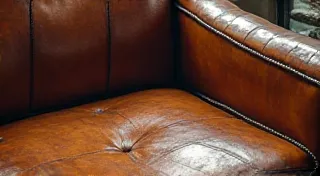Understanding Antique Furniture Wood Types: Identification & Restoration
Antique furniture exudes charm and history, and a significant part of appreciating its beauty lies in understanding the wood it’s crafted from. Identifying the wood type is crucial not just for historical accuracy but also for selecting the correct restoration techniques. Using the wrong method can damage the wood, potentially diminishing its value and integrity. This guide will explore common wood types found in antique furniture, offering insights into their characteristics and how to approach their restoration.
Why Wood Identification Matters in Furniture Restoration
Different wood species possess varying densities, grain patterns, and natural oils. Mahogany, for example, reacts differently to stripping solutions compared to pine. Knowing the wood type allows you to:
- Choose Appropriate Cleaners & Strippers: Harsh chemicals can damage delicate woods.
- Select Correct Finishes: Oily woods might require different sealing approaches.
- Understand Wood Movement: Different woods expand and contract differently with humidity changes.
- Accurately Date & Value Furniture: Certain woods were popular during specific periods.
Common Antique Furniture Wood Types
Let's examine some frequently encountered wood types in antique furniture. Often, a piece will combine different woods, highlighting the craftsmanship and often the budget constraints of the era.
Mahogany
Description: Mahogany is a prized hardwood known for its reddish-brown color, tight grain, and exceptional durability. It's often used in high-end furniture from the 18th and 19th centuries. Older mahogany often has a rich, deeper color than newer varieties. The quality of the wood and the skill of the craftsman dramatically affect the finished product.
Restoration Considerations: Mahogany is relatively easy to work with but can be susceptible to bleaching from sunlight. Gentle cleaning and proper sealing are essential. Careful stripping is needed to remove old finishes without damaging the wood’s natural luster. When dealing with intricate carvings or leather inlays, understanding the proper techniques to avoid damage is paramount, and sometimes requires expert intervention.
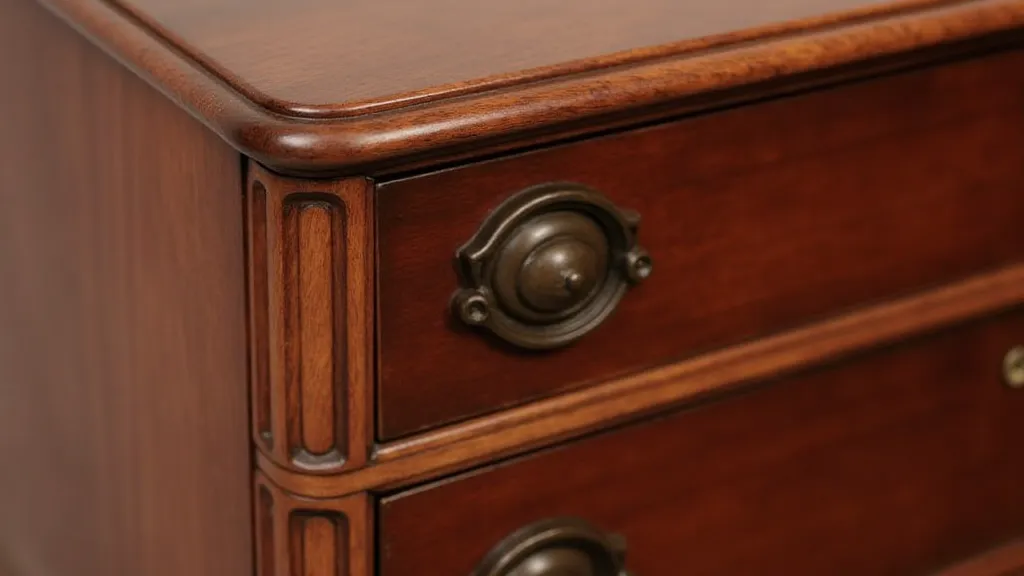
Walnut
Description: Walnut is characterized by its dark, warm brown color and often striking grain patterns. It's a strong and stable wood commonly used in 18th and 19th-century furniture. It's often found in case goods like chests of drawers and cabinets. The beauty of walnut lies not only in its color but also in how it takes a finish, offering a depth and richness that is often unmatched.
Restoration Considerations: Walnut can be more brittle than mahogany and requires a gentle touch during restoration. Avoid excessive sanding, which can dull the wood's natural beauty. Careful attention to color matching during finishing is also important. Protecting the finish with a quality wax is a critical step, and understanding choosing the right wax for antique furniture is essential to preserving the wood's character and luster. It’s a simple step that can significantly extend the lifespan of the piece.
Oak
Description: Oak is a strong and durable hardwood with a prominent grain pattern. It’s often found in 17th and 18th-century furniture, particularly in farmhouse styles. There are two main types: red oak (more porous) and white oak (more water-resistant). The open grain of oak requires special care during restoration.
Restoration Considerations: Oak's open grain requires careful filling and sealing to achieve a smooth finish. Consider using grain fillers before applying topcoats. Proper cleaning to remove dirt and grime trapped in the pores is crucial. Often, older oak furniture exhibits damage to joints that requires skilled intervention. Those familiar with repairing loose joints on antique furniture will know that meticulous execution is key.
Pine
Description: Pine is a softer, more readily available wood often used in less expensive furniture or country styles. It is light in color, often with knots and a less defined grain than hardwoods. Often found in 18th and 19th century farmhouse furniture. Pine’s rustic charm has made it a popular choice for a variety of styles.
Restoration Considerations: Pine is more prone to damage and dents. Repairing damaged areas requires care and potentially patching. Strengthening the wood with consolidants may be necessary for severely weakened pieces. Pine often reacts differently to cleaning solutions, so testing a small, inconspicuous area is always a good practice.
Cherry
Description: Cherry wood boasts a rich, reddish-brown hue that deepens with age. It has a fine, even grain and is known for its smooth texture. Often used in 18th and 19th century furniture. The color transformation of cherry wood over time is one of its most prized qualities.
Restoration Considerations: Cherry is relatively easy to work with, but its color can be easily altered by UV light. Protect finished pieces from direct sunlight. Gentle cleaning and minimal sanding are recommended. The delicate nature of the finish often necessitates careful cleaning and polishing.
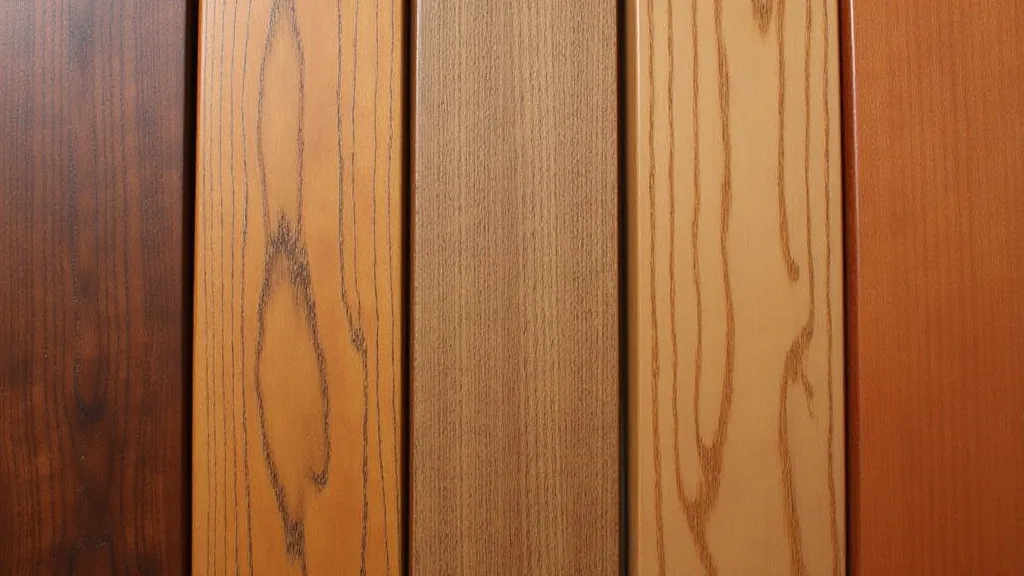
Beyond the Wood: Other Materials and Considerations
While identifying the wood is essential, antique furniture often incorporates other materials like leather, gilt detailing, and intricate inlays. The overall restoration plan should consider these elements, as they can significantly impact the piece’s value and historical accuracy. When leather inlays are present, understanding how to properly clean and restore them is vital – a topic covered in detail in our guide on working with antique leather on furniture.
Common Restoration Challenges and Solutions
Restoring antique furniture isn't always straightforward. Here are a few common challenges and how to approach them:
- Veneer Damage: Veneer, a thin layer of wood applied to a base, is a common feature in antique furniture. Damage can range from lifting to complete loss. Careful re-gluing or patching is required.
- Finish Degradation: Years of exposure to light, heat, and pollutants can cause finishes to crack, fade, and become brittle. Stripping the old finish and applying a new one is often necessary.
- Insect Infestation: Woodworm and other insects can cause significant damage. Professional treatment is often required to eradicate the infestation and repair the damage.
- Gilt Detailing Loss: Many antique pieces feature gilt detailing, which can wear away over time. The art of regilding involves restoring these details, requiring specialized skills and materials.
Tips for Wood Identification
- Examine the Grain Pattern: Is it tight and uniform, or open and porous?
- Note the Color: What is the base color, and how does it change with light?
- Consider the Furniture's Age and Style: Research typical woods used during that period. Knowing the timeframe can dramatically narrow down the possibilities.
- Look for Maker's Marks or Labels: Sometimes, furniture makers will indicate the wood type. These marks are invaluable in confirming the origin and materials used.
- Use a Magnifying Glass: This can help reveal subtle details in the grain.
- Consult with Experts: If you're unsure about the wood type, consult with an antique furniture expert. Their experience can be invaluable.
Conclusion
Accurate wood identification is a cornerstone of responsible furniture restoration. By understanding the characteristics of different wood types, you can choose the most appropriate restoration techniques, preserving the beauty, value, and historical significance of antique furniture for generations to come. The rewards of careful restoration are not only the preservation of a beautiful object but also the connection to the history and craftsmanship of a bygone era.
